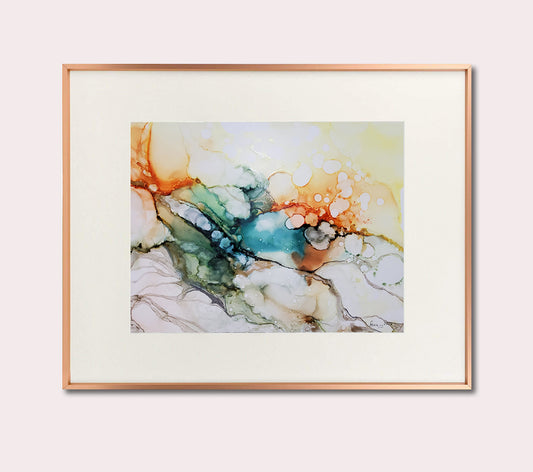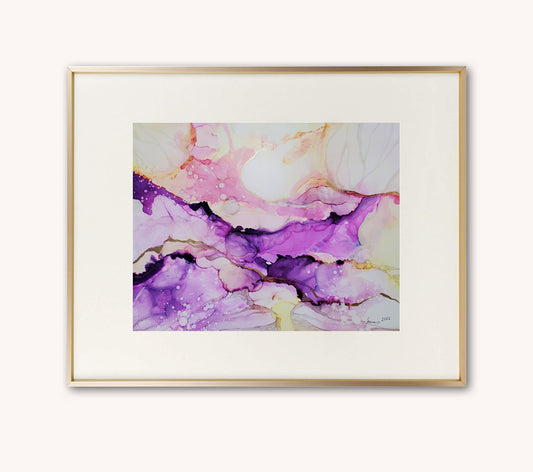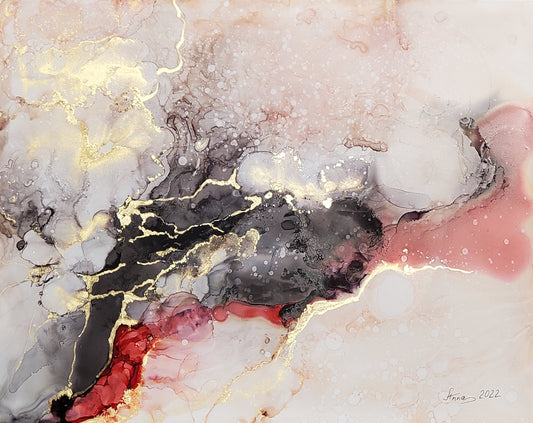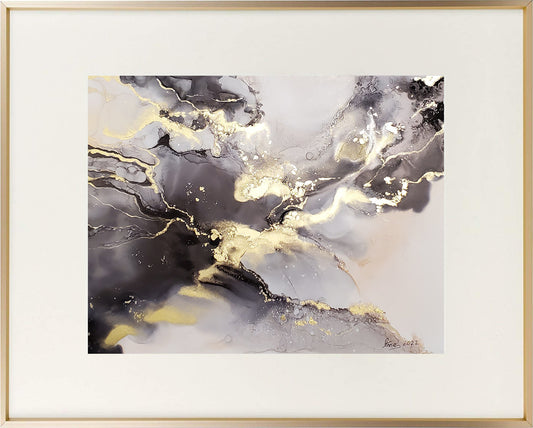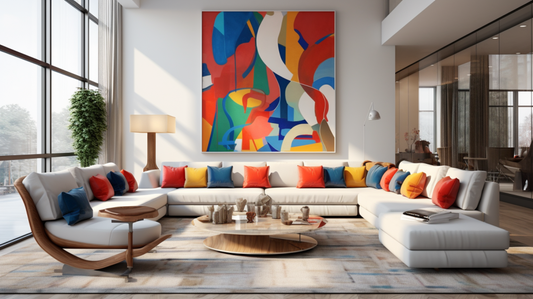The creation of art is often an emotional and personal experience. The process of self-reflection can play a significant role in unlocking the artist's creativity and imagination. When it comes to abstract art, self-reflection can take on an even more profound significance, allowing the artist to explore their inner world and express themselves in unique and unexpected ways.
In this blog post, we will examine the impact of self-reflection on abstract art. We will explore how this process can lead to personal growth and artistic development, and how it can transform the way we see and appreciate art.
Self-reflection and Abstract art
Self-reflection is the process of examining one's thoughts, feelings, and experiences. This process can help an artist better understand themselves and their motivations. By reflecting on their personal experiences and emotions, an artist can tap into their creative potential, producing art that is both powerful and meaningful.
Abstract art is an artistic style that emphasizes the use of color, shape, and form to convey emotions and ideas. Unlike representational art, abstract art does not attempt to depict the physical world accurately. Instead, it encourages the viewer to interpret the artwork on a personal level, allowing them to connect with the artwork on an emotional level.
Self-reflection and abstract art are closely linked. The process of self-reflection allows an artist to tap into their inner world, unlocking a wealth of emotions and experiences that can inspire their artwork. By creating abstract art, an artist can express these emotions and experiences in a way that is both authentic and deeply personal.
Personal Growth and Artistic Development
Self-reflection can lead to personal growth and artistic development. When an artist takes the time to reflect on their experiences and emotions, they can gain a deeper understanding of themselves. This process can help them identify their strengths and weaknesses, and recognize areas where they need to grow.
Through self-reflection, an artist can develop a better understanding of their artistic style. They can explore new techniques and mediums, and push the boundaries of their creativity. This process of artistic development can lead to the creation of artwork that is both original and compelling.
The transformative power of self-reflection on abstract art can be seen in the work of many artists. For example, the abstract expressionist movement of the 1940s and 1950s was characterized by artists who used their artwork to explore their inner world. Jackson Pollock, one of the most famous abstract expressionist painters, is known for his drip paintings, which were created by pouring and dripping paint onto a canvas. Pollock's paintings were a reflection of his emotions, and the process of creating them allowed him to express himself in a way that was both authentic and deeply personal.
Art therapy and Self-reflection
Art therapy is a form of therapy that uses art as a means of self-expression and personal growth. Art therapists use a variety of art forms, including painting, drawing, and sculpture, to help clients explore their emotions and experiences.
Self-reflection is a critical component of art therapy. By reflecting on their artwork, clients can gain insight into their emotions and experiences. This process can help them develop a better understanding of themselves, leading to personal growth and healing.
Art therapy is particularly effective for individuals who have difficulty expressing themselves verbally. The process of creating art allows them to communicate their emotions and experiences in a non-verbal way, making it easier to explore and process their feelings.
Mindfulness in Art
Mindfulness is the practice of being present in the moment and focusing one's attention on the present experience. Mindfulness has been shown to have a positive impact on mental health, reducing stress and anxiety.
In the context of art, mindfulness can be a powerful tool for self-reflection. By being present in the moment and focusing on the creative process, an artist can connect with their inner world and produce artwork that is both authentic and meaningful.
When practicing mindfulness in art, the focus is not on the final product but on the process of creating. By focusing on the process, an artist can tap into their creativity and produce art that is unique and original.
The Benefits of Self-reflection on Abstract art
The transformative power of self-reflection on abstract art is clear. Through self-reflection, an artist can gain insight into their emotions and experiences, leading to personal growth and artistic development. The process of creating abstract art allows an artist to express themselves in a way that is both authentic and deeply personal, leading to the creation of artwork that is original and compelling.
Self-reflection can also have a therapeutic effect on individuals, particularly when used in art therapy. By exploring their emotions and experiences through art, individuals can gain a better understanding of themselves and develop the tools they need to cope with difficult situations.
Conclusion
Self-reflection is a critical component of the artistic process, particularly in the context of abstract art. By exploring their inner world and emotions, an artist can unlock their creativity and produce artwork that is both original and compelling. The transformative power of self-reflection can be seen in the work of many artists, and it is clear that this process can lead to personal growth and artistic development.
As we have seen, art therapy is also an effective tool for individuals looking to explore their emotions and experiences in a non-verbal way. By using art as a means of self-expression, individuals can gain insight into themselves and develop the tools they need to cope with difficult situations.
Finally, the practice of mindfulness in art can help artists connect with their inner world and produce artwork that is unique and original. By focusing on the process of creating rather than the final product, artists can tap into their creativity and produce artwork that is authentic and deeply personal.
In conclusion, self-reflection is a powerful tool for artists, particularly in the context of abstract art. By exploring their emotions and experiences, artists can unlock their creativity and produce artwork that is original and compelling. The transformative power of self-reflection on abstract art is clear, and it is an essential component of the artistic process.
Intrigued by the fascinating world of abstract art? Your artistic journey doesn't have to end here. Explore a mesmerizing collection of captivating and modern abstract artworks by visiting our Abstract Art Collection and Shop. Anna Manukyan's gallery is a treasure trove of creativity, where you can not only see but also acquire unique pieces that resonate with your aesthetic sensibilities. Dive into a realm of imagination, emotion, and innovation as you discover the transformative power of abstract art. Don't miss the opportunity to enrich your surroundings with these thought-provoking creations. Start your exploration now and let the art on this page inspire your soul.


